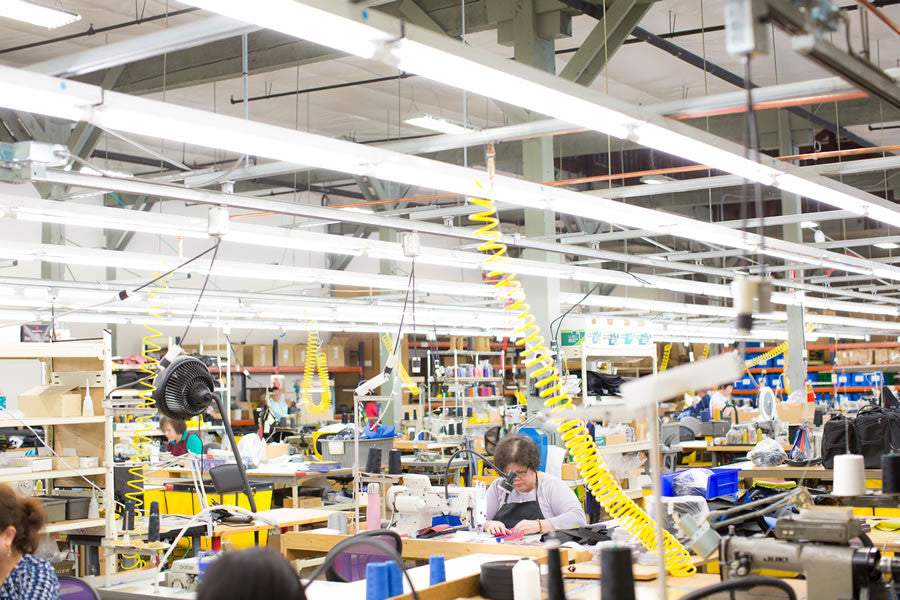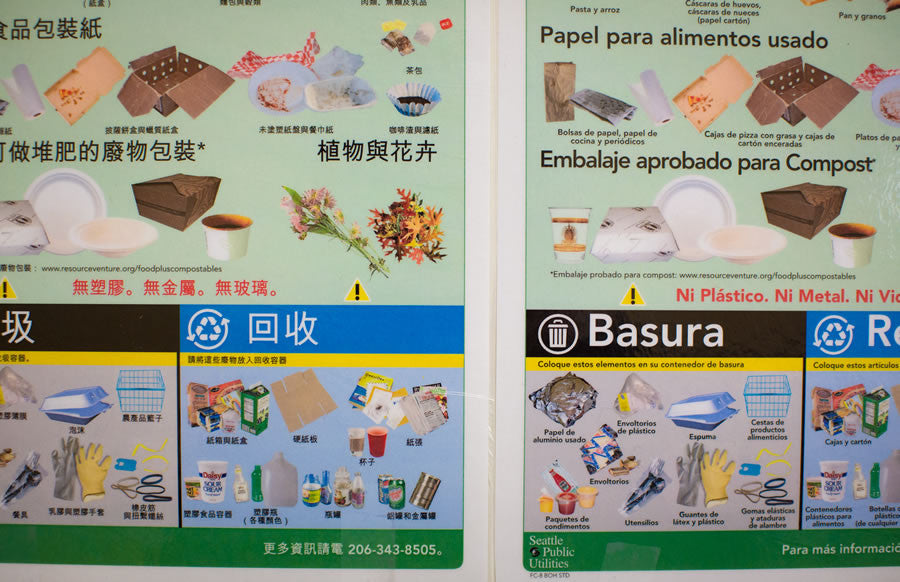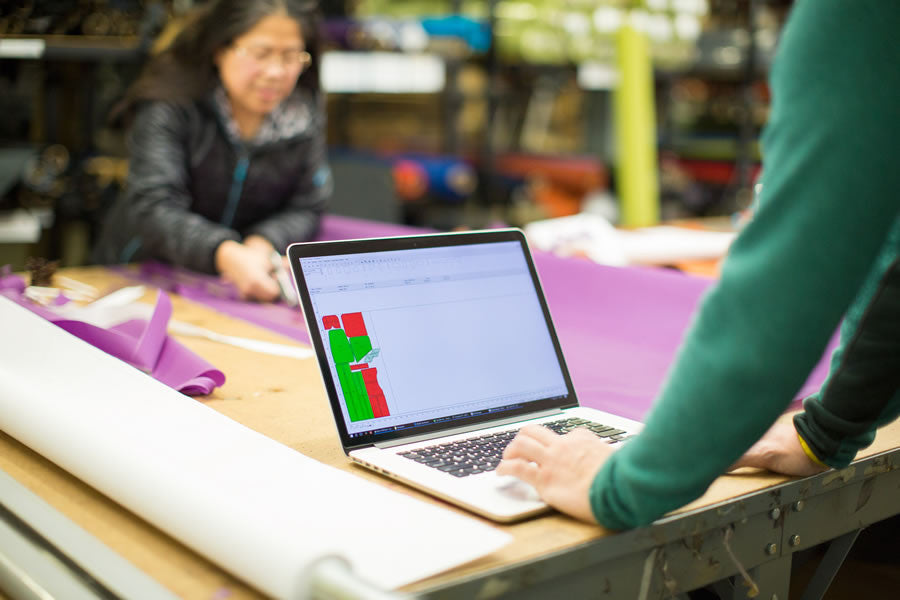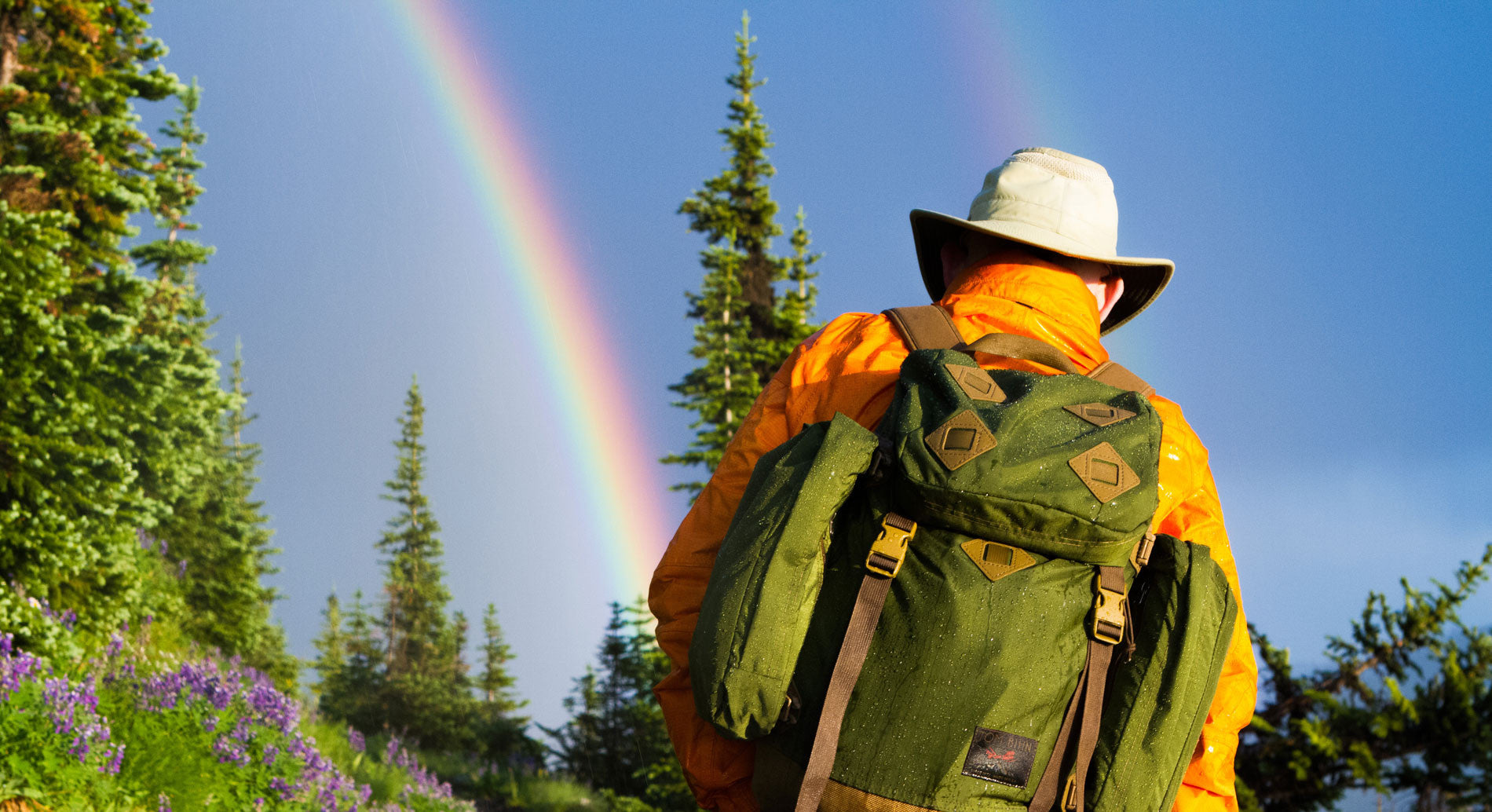We’re A Certified B-Corporation
Certified B Corporations are businesses that meet high standards of verified social and environmental performance, public transparency, and legal accountability, balancing profit with purpose.
For us, one of the best things about becoming a Certified B Corporation is that the process helped us identify further goals for our continual improvement in both social and environmental performance.
You can view our public B Corporation profile here. And if you’re a small business like us and are interested in pursuing B Corporation certification and have questions, feel free to reach out: emailus@tombihn.com

Carbon Neutral Shipping + Eco Packaging
"Ninety-seven percent of climate scientists agree that climate-warming trends over the past century are very likely due to human activities, and most of the leading scientific organizations worldwide have issued public statements endorsing this position." SOURCE: climate.nasa.gov/evidence
In 2010, TOM BIHN became one of the first small businesses in the United States to take part in the UPS Carbon Neutral shipping program. And we were the very first company to have our packaging certified in the UPS Eco Responsible Packaging Program.
Through our participation in the UPS Carbon Neutral shipping program from 2010 - 2016, we’ve purchased (it's on us, not you) carbon credits offsetting over 560 metric tons of CO2e emissions.
LED Factory Lights
Widespread use of LED lighting has the greatest potential impact on energy savings in the United States. By 2027, widespread use of LEDs could save about 348 TWh (compared to no LED use) of electricity: This is the equivalent annual electrical output of 44 large electric power plants (1000 megawatts each), and a total savings of more than $30 billion at today's electricity prices."SOURCE: energy.gov/energysaver/led-lighting
At our Seattle, Washington, USA headquarters and factory, we are 100% LED-lit.

Seattle City Light Green Up Power
We choose to pay a surcharge on our utility bill to purchase Renewable Energy Credits through Seattle City Light. The credits support renewable development across the Northwest—projects generating energy from wind and geothermal sources and dairy biogas. We're thankful to our municipal energy company for giving us this option.

Recycling, Compost, and Waste
Of course, a factory doesn't only produce industrial waste and by-products. Our crew has breaks three times a day, and our snacks, drinks, and lunches create the usual food scraps, containers and wrappers—most of which can be composted or recycled. We work closely with local Waste Management folks to help educate all of us here at TOM BIHN about sorting recycling, compost, and whatever is left for the landfill. To support the market for post-consumer paper, we use Green Seal recycled toilet paper and paper towels in our bathrooms, and we use 100% post-consumer paper for our office paper and receipts.

Factory Air Exhaust
We use automated equipment to cut and heat-seal nylon webbing, a process that produces minor yet noticeable amounts of noxious fumes. We’ve always filtered that exhaust as it leaves the factory, and in 2016 we did a major upgrade on our filtration system by installing an Air King M-VMC. With this new system, we know that the quality of the air leaving the factory is as good as it can possibly be. Because we are such a small manufacturer, we aren’t required to clean up our exhaust, but we do it anyway: we breathe that air too, y’know.

Minimizing Fabric Waste
To cut production batches of bags, we print what is called a "marker": basically, a map of bag panels that is laid over the top of multiple plies of fabric. Our fabric cutter, Irma, then uses her fabric cutting saw to follow this map. When we make the markers, we make sure to nest the panels as close together as possible to minimize fabric waste. By leveraging some very smart software, our fabric utilizations have increased from 85%-90% to often over 95%. Furthermore, we try to push all the dead space in the marker to one area so that we can make the biggest and most useful scraps possible.

Utilizing the Fabric Scraps We Do Create
Our Organizer Pouches were originally designed to make use of this inevitable scrap. Our hope to minimize waste resulted in one of our most handy and beloved designs ever. With some of the excess fabric from our mask program, we have been making tote bags and travel accessories. How cool is that?

Fabric Finishes: DWRs and Beyond
For some time now we’ve been at the forefront of our industry to utilize the most environmentally friendly water-repellant treatments (Durable Water Repellant or DWR) on our fabrics. We typically specify—and pay a premium price for—the treatments that meet strict Japanese and/or EU standards. Moving ahead, we hope that by the end of 2017, the majority of our fabrics will be processed in bluesign® certified facilities, meaning that not only superficial DWR treatments but all dyeing and coating processes will meet the highest environmental standards.

Our Partnership with Leave No Trace
We humans are enjoying more time outdoors than ever before. It's good for us: time spent in nature—whether a city park or a national forest—can help us reframe our perspective and, well, get out of our own heads. We want to make sure the time we spend in nature is as good for the environment as it is for us, and that's why we sponsor Leave No Trace.
Click on the links to learn more about the Seven Principles of Leave No Trace:
Plan Ahead and Prepare
Travel and Camp on Durable Surfaces
Dispose of Waste Properly
Leave What You Find
Minimize Campfire Impacts
Respect Wildlife
Be Considerate of Other Visitors

We’re Operationally Carbon Neutral
The operations of our entire company have been assessed by third-party organizations to determine our overall carbon impact. Our use of natural gas, water and electricity was assessed, as was the impact of our business travel, inbound and outbound shipping, employee commuting, paper products, and waste generated.
Thanks in part to our factory being in a temperate climate, our switch to all LED lighting, the installation of switches that turn off all electrical activity on the production floor, and other various efforts, our factory only uses 13.6 kBtu/sqft, which is only 26% of the energy used in a typical U.S. warehouse space. Additionally, the average daily length of our employees commute is 50% shorter than the U.S. average.
We learned that inbound and outbound shipping is our largest source of emissions. Shipments sent via truck, rail or boat are far less impactful than those sent by air; we will continue to work with our suppliers to have shipments sent via methods other than air whenever possible. We hope you’ll join us in choosing low emission shipping options (UPS Ground) when possible.
To offset our Scope 1, 2, and remaining Scope 3 emissions, we have purchased carbon credits through BEF to support Washington’s Winston Creek Forest Project. A recent study found that restoring forests could be one of the best ways to stop or slow climate change; that’s why we decided to dedicate the purchase of 100% of the offsets to the Winston Creek project, an effort supporting a forest that’s right in our own backyard.
Purchasing carbon offsets does make a difference — especially when choosing a meaningful project to support such as the Winston Creek Forest Project. At the same time, purchasing offsets certainly doesn’t give us license to be careless with the emissions we produce or contribute to producing. Our existence has a carbon footprint; we acknowledge that, we work to reduce that impact, and for the impacts we can’t eliminate, we choose to purchase meaningful offsets.
We are now an operationally carbon neutral company, but we’re far from done: we’re currently researching opportunities to go above and beyond when it comes to environmental responsibility.

Social Impact
We are committed to making a positive social impact. We have donated over 215,000 masks to social organizations and communities in need since March 2020, and still make regular mask donations on request. In addition, we donate bags to libraries and students, and support social organizations by offering bags for fundraisers and auctions.
bluesign® and OEKO-TEX® certified materials
We choose (and thoroughly test) our materials to ensure they’re of the highest quality and provide exceptional durability. We believe in making durable bags that will stand the test of time: the most environmentally friendly bag or backpack is the one that needn’t be replaced every year.
Our materials aren’t only durable — they’re also some of the most environmentally and socially responsible materials from which we could choose. Our major materials suppliers — covering all zippers, 80% of plastic components like buckles, and 80% of the fabric we use — are OEKO-TEX® and/or bluesign® certified.
bluesign® Certification
bluesign® certification ensures the highest degree of safety for the consumer, manufacturing with lowest possible impact on people and the environment, and responsible use of resources.
- Our 210d HT ballistic nylon and 525d HT ballistic nylon fabrics are woven, dyed, and finished in a bluesign® certified mill.
- All of the zippers we use are made in bluesign® certified factories.
- Our 200d Halcyon and 400d Halcyon fabrics are woven and dyed in bluesign® certified mills.
- The majority of our components such as buckles and snaphooks are made in a bluesign® certified factory.
OEKO-TEX® Certification
OEKO-TEX® is a union of 18 independent research and test institutes in the field of textile ecology in Europe and Japan; their certification ensures long-term environmentally friendly production processes, health and safety, and socially responsible working conditions.
- Our 200d and 400d Halcyon fabrics are finished in a OEKO-TEX® certified facility.
- The EV50 foam used to make all of our backpack shoulder straps is certified according STANDARD 100 by OEKO-TEX®.
Six Chain PFOS (perfluorooctane sulfonate) DWR Coatings
Our HT ballistic nylon, 210d Cerylon, 200d Halcyon, and 400d Halcyon fabrics all utilize six chain PFOS (perfluorooctane sulfonate) DWR (durable water repellent) finishes. Six chain PFOS break down faster into simpler and more benign chemicals than the eight chain PFOS used previously. As PFO-free water repellent finishes have become more available, we have started testing and utilizing some of those fabrics- we introduced bags in the 100% recycled, PFC-free X-Pac RX30 fabric in 2022.
All of this is only a beginning — we can do more, and we will do more. Though we’re a small company and may not have the impact that bigger companies can have, we have added our voice to industry conversations on the topic of environmentally responsible DWRs.

